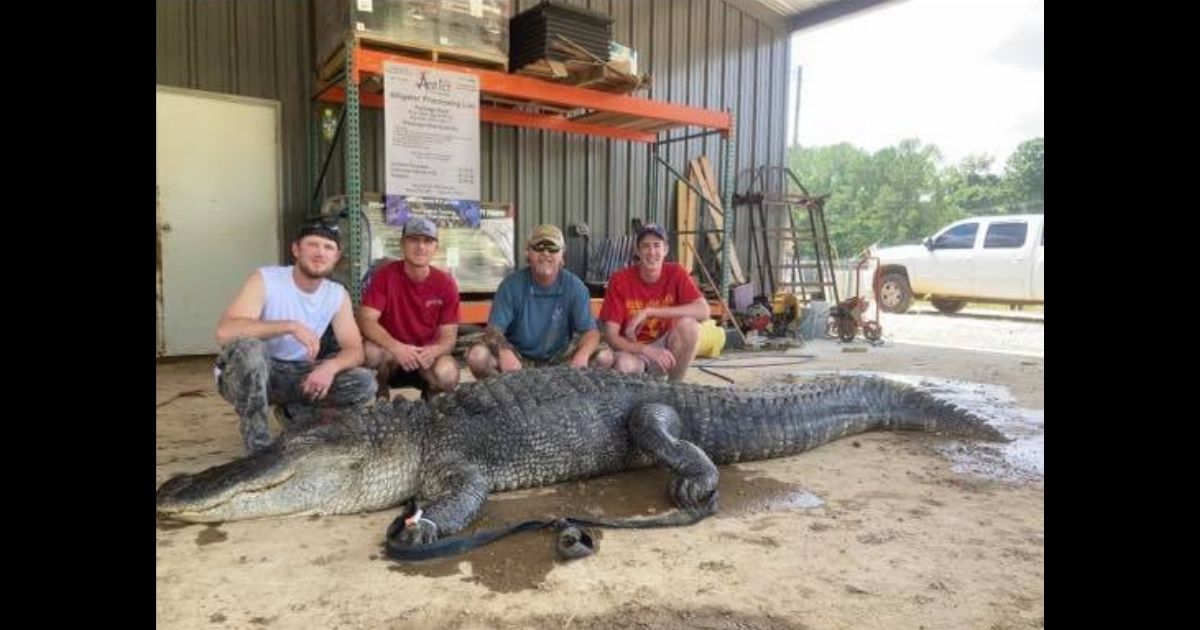When four men set out on an alligator hunt in the beginning of September, they had no idea that they’d make the catch of their lives — in more ways than one.
John Hamilton, Todd Hollingsworth, Landon Hollingsworth and Drew Barryhill were scouting an area at Eagle Lake near Vicksburg, Mississippi, when they came upon a monster gator.
It took the men hours to conquer the beast, and when they took it to Red Antler Processing in Yazoo City, Mississippi, it came in at a whopping 13 feet, 5 inches long and just over 750 pounds.
[firefly_embed]
[/firefly_embed]
Hamilton, who called it “the hunt of a lifetime,” posted photos of the impressive haul on Facebook, and got 280 pounds of usable alligator meat out of the deal.
But there was more: As the alligator was dressed out, Shane Smith of Red Antler made two more once-in-a-lifetime discoveries.
“We have been cutting into a few big gators to see what was in their stomach, everyone so far has had something cool in it,” Red Antler posted on Facebook on Sept. 2. “The 13 foot 5 inch gator brought in by John Hamilton today, produced the shock of the year!!”
Along with “lots of fish bones and scales, feathers, balls of hair, persimmon seeds… probably from a Raccoon… several rocks, pieces of wood, and a lot of stinky bile liquids that burn your skin,” they found two ancient artifacts.
[firefly_embed]
[/firefly_embed]
The first looks to be a plummet, a tear-drop-shaped object that some think was used as a weight for fishing. The material it’s made of is not local, prompting specialists to believe that it may have been traded into the area.
Geologist James Starnes, who specializes in Native American artifacts found near the Mississippi Delta, told the Clarion Ledger the item could be from 1,000 to 2,000 B.C.
[firefly_embed]
[/firefly_embed]
The other item is an atlatl dart point that could date from 5,000 to 6,000 B.C., according to Starnes.
“These things were made before the advent of bows and arrows in North America,” Starnes told CNN.
[firefly_embed]
[/firefly_embed]
“We’ve had Native American inhabitants in North America, especially Mississippi, going back probably 12,000-plus years. This technology was the technology that they would have brought with them.”
Of course, the million-dollar question now is how did these ancient artifacts make their way into the stomach of a giant reptile?
“My first instinct was like, no way. There’s no way this is possible,” Smith said. “You naturally think that, ‘Oh, my gosh, this alligator, either ate an Indian or ate an animal that the Indian shot.’ But, you know, obviously the alligator is not thousands of years old.”
[firefly_embed]
[/firefly_embed]
Most are guessing the alligator was 80 to 100 years old, and some have suggested the animal may have attacked and eaten someone collecting such artifacts — but no human bones or other remains were found inside the alligator.
“Since this area was so heavily populated over such a long period of time, artifacts show up in some very unusual places,” Starnes said, according to CNN. “They can erode from the surface, or they can be exposed because of things like rain events, construction projects.
“You could imagine that one of these sites having this much stone material is just eroding out of the bank, pretty easy pickings for an alligator, especially looking for her, you know, just something to ingest. Alligators will pretty much eat anything.”
This article appeared originally on The Western Journal.















 Continue with Google
Continue with Google